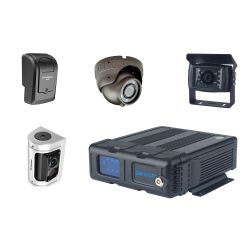
New consumer trends create new business opportunities and new business challenges. One of the most disruptive trends over the past decade is businesses shifting over to a 24/7 model. In particular, the trend is disrupting the fleet industry. Many 24/7 fleets are hiring nighttime drivers and creating nighttime driver safety plans to adapt to this trend.
What’s the Big Deal about 24/7 Businesses?
Before discussing nighttime driver safety, let’s first discuss the trend of going 24/7. Why is it such a big deal? 24/7 businesses are trending because of consumer expectations and because of consumer groups.
Consumer Expectations
Firstly, changing consumer expectations are driving 24/7 businesses. In particular, people are used to buying goods and services online. Hence, a lot of consumers are shopping at home and are expecting around-the-clock availability.
Consumer Groups

Secondly, shifting consumer groups are asking for 24/7 service. Millennials are flooding the marketplace and influencing quick service. According to research, 75% of consumers expect same-day responses and 50% of consumers expect same-hour responses. In turn, businesses are expanding their service hours to accommodate consumer attitudes.
24/7 Fleets are More Profitable
Because of changing consumer expectations and changing consumer groups, many fleet services expanded to a 24/7 business model. These fleets are rewarded with higher profits because expanded business hours lead to more business and stronger consumer interest.
24/7 Fleets also have Higher Responsibilities
On the other hand, 24/7 fleet services experience additional challenges. One of the biggest challenges is reducing higher safety risks.
As expected, nighttime driving leads to higher risks because of visibility and fatigue. According to traffic stats, 40% of all traffic accidents happen at night even though there are less drivers on the road.
For that reason, many 24/7 fleets develop a nighttime driver safety plan.
Nighttime Driver Safety Planning Reduces Accidents
The best way to reduce accidents is proactive planning. In particular, safety managers typically rollout a nighttime driver safety plan. Plans typically contain 2 components – defensive driving training and driver fatigue reduction.
Defensive Driving Training

Defensive driving focuses on employees and on training. Drivers need to take extra precautions to avoid nighttime accidents. For instance, according to a survey of driving instructors, some of the most common training items include turning on headlights and maintaining larger stopping distances.
Driver Fatigue Reduction
On the other hand, driver fatigue reduction mostly falls on operation managers. Most nighttime workers show up to work with sufficient rest. However, due to a high volume of customer requests, some drivers get overworked.
This is where fatigue management comes into play. Some companies have workload restrictions and monitor driver activity to ensure drivers are not overworked. In addition, some companies monitor driver fatigue with in-cab fatigue detection systems. When sensors detect fatigued drivers, managers are required to instruct drivers to stop driving.
Conclusion: More Money, More Problems, Find Solutions!

If a market researcher tells a 1980s business owner that 24/7 service is the future and will earn tons of money, the business owner will say, “Let go ahead and do it!”.
However, as some would say, more money brings in more problems. We discussed the example of increased driver safety risk. However, if businesses navigate through potential risks with proactive planning, they will reap the rewards of opening their doors 24/7.










